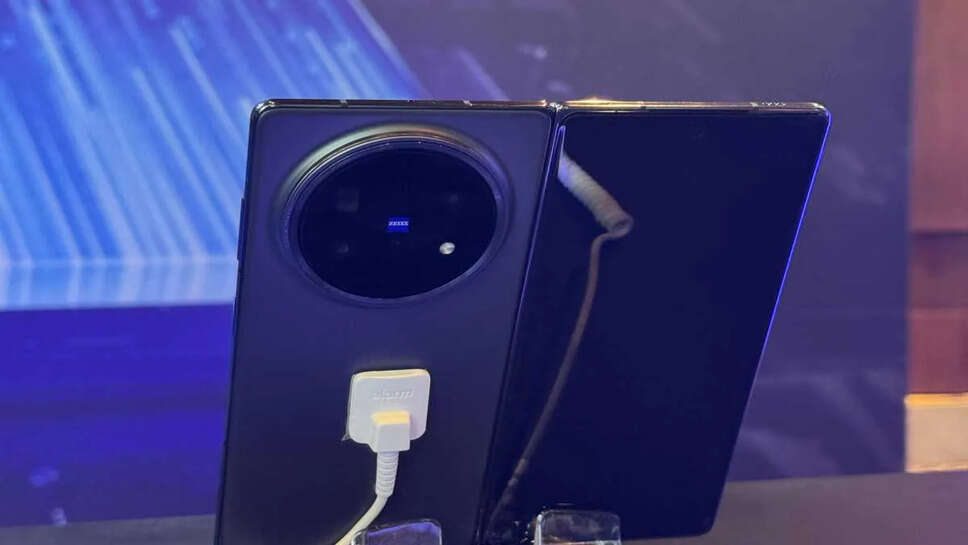Premiumisation of smartphone segments is a journey: vivo

In the fast-evolving world of smartphones, the term premium is no longer just about price—it’s about experience, lifestyle, and aspiration. Vivo, one of India’s leading smartphone manufacturers, believes the shift towards premiumisation in the smartphone segment is a gradual but irreversible journey, fueled by changing consumer behavior, growing digital needs, and India’s maturing tech ecosystem.
Far from being a trend limited to urban elite or flagship models, premiumisation is seeping into mid-range and upper-mid-range segments as well, redefining what Indian users expect from their devices.
Not Just Price, But Perception
Vivo executives describe premiumisation not simply in terms of cost, but as a transformation in how users perceive value. It's about delivering flagship experiences at a wider range of price points.
“Premiumisation is not a product strategy—it’s a mindset,” said a senior executive from Vivo. “Indian consumers are evolving. They want style, performance, camera excellence, and seamless integration with their digital lifestyles. Price matters, but so does how a phone feels, performs, and connects with the user’s identity.”
This shift is particularly evident in the under-₹40,000 category, where features once reserved for ₹80,000+ flagships—such as advanced photography, AMOLED displays, and AI capabilities—are now becoming common.
India’s Maturing Market
India is no longer just a volume-driven smartphone market. As disposable incomes grow, consumers are upgrading faster and expecting more from each upgrade. While affordability was once the defining feature of smartphone sales, today’s buyers—especially Gen Z and millennials—prioritise performance, design, camera quality, and brand value over just specifications.
Vivo recognizes this change. Over the last two years, it has reoriented its portfolio to reflect this aspirational shift. With sub-brands like Vivo V and X series, the company has introduced devices that push the boundaries of camera innovation, display aesthetics, and chipset performance.
The recently launched Vivo X-series device, for example, features Zeiss co-engineered optics and a custom imaging chip—previously unthinkable for mainstream phones sold in India.
The Role of Camera and Design
In the premium journey, camera technology is proving to be the battleground. Vivo has invested heavily in camera R&D, understanding that photography remains a key buying trigger for Indian consumers.
“We found that people are not just clicking selfies or food shots anymore. They are experimenting with long-exposure photography, cinematic reels, and vlogging. The phone isn’t just a communication tool—it’s a creative companion,” a Vivo product manager explained.
Design, too, is no longer secondary. With foldables, curved edges, leather backs, and metallic frames entering mid-tier pricing, users are willing to pay more for a device that reflects style and personality.
Bridging Offline and Online Premium Demand
India’s smartphone story is still deeply tied to its offline retail experience, and Vivo has been among the few brands to maintain a strong presence across both channels. While premium devices are more visible in e-commerce platforms, a significant portion of aspirational India still prefers buying from physical stores.
Vivo has consciously worked to blend the online convenience with offline confidence—offering premium experiences, EMI schemes, live demos, and after-sales service across Tier 1, 2, and even Tier 3 cities.
“The real journey of premiumisation begins when someone in a Tier 2 town walks into a store and chooses a phone that’s ₹5,000 higher than what they had initially planned—just because it feels like a statement,” the executive said.
Consumer Expectations Are Evolving
Today’s smartphone buyer is informed, curious, and ambitious. With an internet ecosystem that includes 5G, cloud gaming, UPI, video editing apps, and AI-driven productivity tools, consumers want devices that can power both work and play seamlessly.
Vivo’s data shows that many customers who previously opted for budget models are now upgrading within 12-18 months—far shorter than the earlier 2.5-3 year cycle.
This acceleration is driven not just by tech upgrades, but by lifestyle demands. A better camera for content creation, smoother displays for gaming, fast charging for busy schedules—premium features are becoming everyday essentials.
Premiumisation Is Layered, Not Linear
According to Vivo, premiumisation doesn't mean replacing budget phones with expensive ones—it means raising the bar across the board. In other words, even budget phones today come with features that were considered premium five years ago.
“Every price segment is rising in capability. What was flagship yesterday becomes mid-range today, and tomorrow’s mid-range becomes the new entry point,” said a Vivo strategist.
This continuous elevation creates a layered market where consumers at every level feel they’re getting premium value—whether it’s through better materials, longer software support, or enhanced experiences.
Role of 5G and Innovation
The rollout of 5G has significantly influenced how Indian users view their devices. Vivo has ensured that even its mid-range models are 5G-ready, with support for multiple bands. But it isn’t just about speed—it’s about enabling next-gen applications.
Whether it's streaming 4K content, real-time video editing, cloud-based gaming, or low-latency communication, 5G-ready phones are already shaping new user habits.
Vivo’s innovation roadmap includes not just network readiness, but also AI enhancements, custom imaging chips, and a growing focus on sustainability. From eco-friendly packaging to longer battery life cycles, the company sees environmental responsibility as part of the premium experience.
Competition and Brand Value
The premium smartphone segment is also intensely competitive. With players like Apple, Samsung, and OnePlus dominating the space, Vivo’s strategy lies in offering differentiated value. Partnerships with optical pioneers like Zeiss, localised feature sets for India, and strategic pricing help Vivo maintain relevance.
The brand has also worked to shift perceptions—from a value-for-money player to a serious innovation contender.
“We are not chasing numbers anymore. We are chasing experience. That’s the future of premium,” said a Vivo spokesperson.
Looking Ahead: The Next Phase of Premium
Vivo believes that the next leg of premiumisation will be hyper-personalised—AI-driven UX, on-device language models, foldables, and sustainable materials will define the new face of high-end phones.
As users continue to blur the lines between content creation, work, entertainment, and personal expression, smartphones will evolve as lifestyle hubs.
“Premiumisation is not a destination. It’s a journey with each new generation of users setting the bar higher,” Vivo concluded.
In this unfolding journey, brands that listen deeply, innovate constantly, and act responsibly will define the narrative. And for Vivo, premium isn’t just about devices—it’s about the promise of better living, one thoughtful upgrade at a time.
